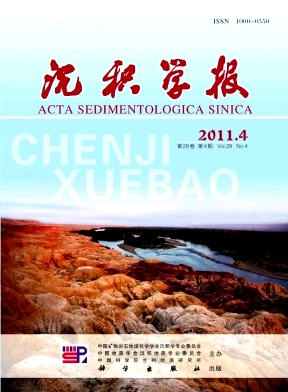Stratigraphic Division between Xujiahe Formation and Zhenzhuchong Member in the NE Part of Central Sichuan Basin
- Received Date: 1900-01-01
- Rev Recd Date: 1900-01-01
- Publish Date: 2011-08-10
-
Key words:
- NE part of central Sichuan Basin /
- stratigraphic division between Triassic and Jurassic /
- LUNA principle /
- to judge the reached stratigraphic level with cuttings
Abstract: Studies of the corresponding seismic data revealed the division plane is a sequence boundary (SB) (T3x truncated by the boundary and along which J1z onlaps). So it can be dertermined by LUNA principle. LUNA regards sequence boundary unconformity as can be recognized by strata geometry of abrupt change of accomodation generation rate which is marked by the paleochannel scale and the superimposition of channel sandstones, and base of the almagmated sandstone body is just the situ of the sequence boundary. In welllog, SB is presented by break point of Gr and Rt curvesthe reverse rhythm of the underlain sequence turns into positive rhythm of the overlying sequence upwards at the point. This plane coincides well with the base of basal conglomerate. Measuring the transboundary short columns along the west edge of Huayingshan and coresection studies have revealed that apparent differences of paleontologypaleoecology and sedimentology exist in between T3x and J1z successions, which reflect the inreversibility of geological evolution. Paleontology: mostly fossil plants, plants are plentiful and wellpreserved in T3x6 black shale, and plant stems are considerably common in coarse sandstone of the same member. Fossils are rare in J1z, however, allochthonous small carbonized plant debris or occasionally coal "pebbles" are seen. Sedimentary and diagenetic feafures: most aspects are quite different beween T3x6 and J1z, except that siderite concretions occur in the interval from below to above the boundary by several meters. Lithologythe lowermiddle part of T3x6 is represented by thick graywhite median (coarse)fine sandstone with single bed thickness of several to decades meters, the upper part by interbeds of light gray, yellowish gray fine sandstone to siltstone and black shales; however J1z is characterized by intercalations of light gray, grayishgreen thin siltstone and red, stained mudstome at its lower part, the mudstone are grading into gray colour and sandstone are getting thicker at its upper part. Composition——the guartz content in lower J1z is higher than the sandstones of T3x6, but its chert and metamorphic rock debris are apparently lower than the later; Texture maturity——J1z siltstone is much worsesorted than the T3xv6 sandstone, the thin turbidites in J1z are not seen in T3x successions. Sedimentary sturcturesbiclaylayers, herringbone structure, abrupt facies change, lenticular and flaser bedding and thin interbedds are common in T3x but not seen in J1z. Siliceous cobblethe J1z basal cobble is a reliable boundary marker which is easily differentiated from the basal ones of T3x6; the storminduced conglomerate and "oxhorn coal" occur only in T3x; rootlets are common seen in J1zv and occassionaly presented in T3x. Sedimenfary facies: the abovemention differences between T3x and J1z are thought to be derived from original sedimentary environments, the authors attribute T3x to shallow sea and estuarine origin and J1z to lacustrine delta system. The two successions are also different from each other in welllogging responses and can be easily discerned. This paper proved that to judge the reached stratigraphic level during welldrilling swiftly on the basis of cutting information can be achieved.
| Citation: | ZHAO Xia-fei. Stratigraphic Division between Xujiahe Formation and Zhenzhuchong Member in the NE Part of Central Sichuan Basin[J]. Acta Sedimentologica Sinica, 2011, 29(4): 631-643. |






 DownLoad:
DownLoad: